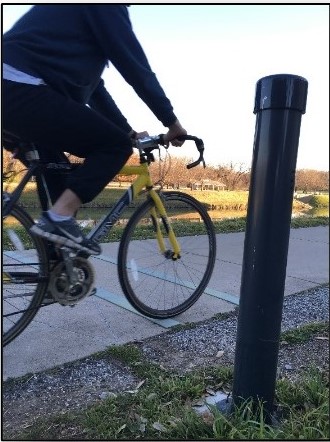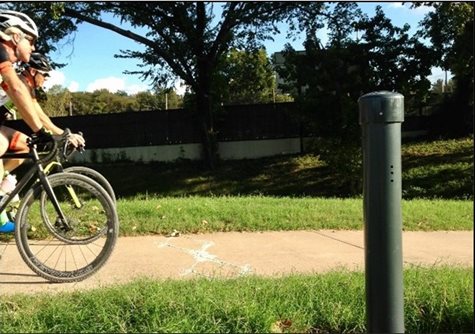Pedestrian & Bicycle Traffic Count Program
NCTCOG collects data on pedestrian and bicycle facility usage throughout the region to support effective pedestrian and bicycle planning.  Data related to actual non-motorized travel volumes helps:
Data related to actual non-motorized travel volumes helps:
- Inform the public and decision makers about actual usage and travel patterns
- Analyze trends
- Evaluate the impacts of specific projects (before and after) with mobile counts
Pedestrian and Bicycle Traffic Count Data Patterns and Trends
There are over 50 count stations installed on trails across the Dallas-Fort Worth region, spread across fourteen cities in four counties. NCTCOG actively monitors data collected at locations primarily used for transportation purposes, while the remainder of the count locations are located in parks and considered primarily recreational-oriented trips.
Pedestrian and bicycle traffic count data is available at the following sources:
- Regional patterns and trends are highlighted in the NCTCOG Bicycle and Pedestrian Trail Use Summary, 2024-2025
- Additional trends and patterns are reported in NCTCOG's traffic count reports (click on the "Traffic Count Reports" blue heading below).
- NCTCOG maintains a regional clearinghouse of traffic count data, including historical bicycle and pedestrian counts. Zoom into the interactive map for bicycle and pedestrian count stations (in green) for site-specific data.
- NCTCOG provides data for TxDOT's Texas Bicycle and Pedestrian Count Exchange, a centralized map-based interface to easily access and visualize count data across the state, including the North Central Texas region. In addition, TxDOT's Bicycle and Pedestrian Count Program has compiled a wealth of best practices and guidance on bicycle and pedestrian count data collection.
- To address performance measures in active transportation
- To obtain new baseline data for purposes of updating Air Quality calculations used for measuring benefits of bicycle and pedestrian facilities
- To provide the Regional Transportation Council (RTC), other elected officials, and local jurisdictions with more informed data related to non-motorized travel volumes and routes in the region
- To establish regional count/data collection procedures and practices for consistent application by local jurisdictions/count programs throughout the region
- To serve as the regional clearinghouse for multi-modal count data
- To support local jurisdictions in establishing and maintaining local count programs
- To establish a baseline of continuous count data in targeted regionally significant locations/corridors that are supplemented by local count programs
- To identify non-motorized commuting patterns
- To initiate non-motorized travel data collection that could be integrated with regional travel models in the future

Staff contact: Chris Nelson
